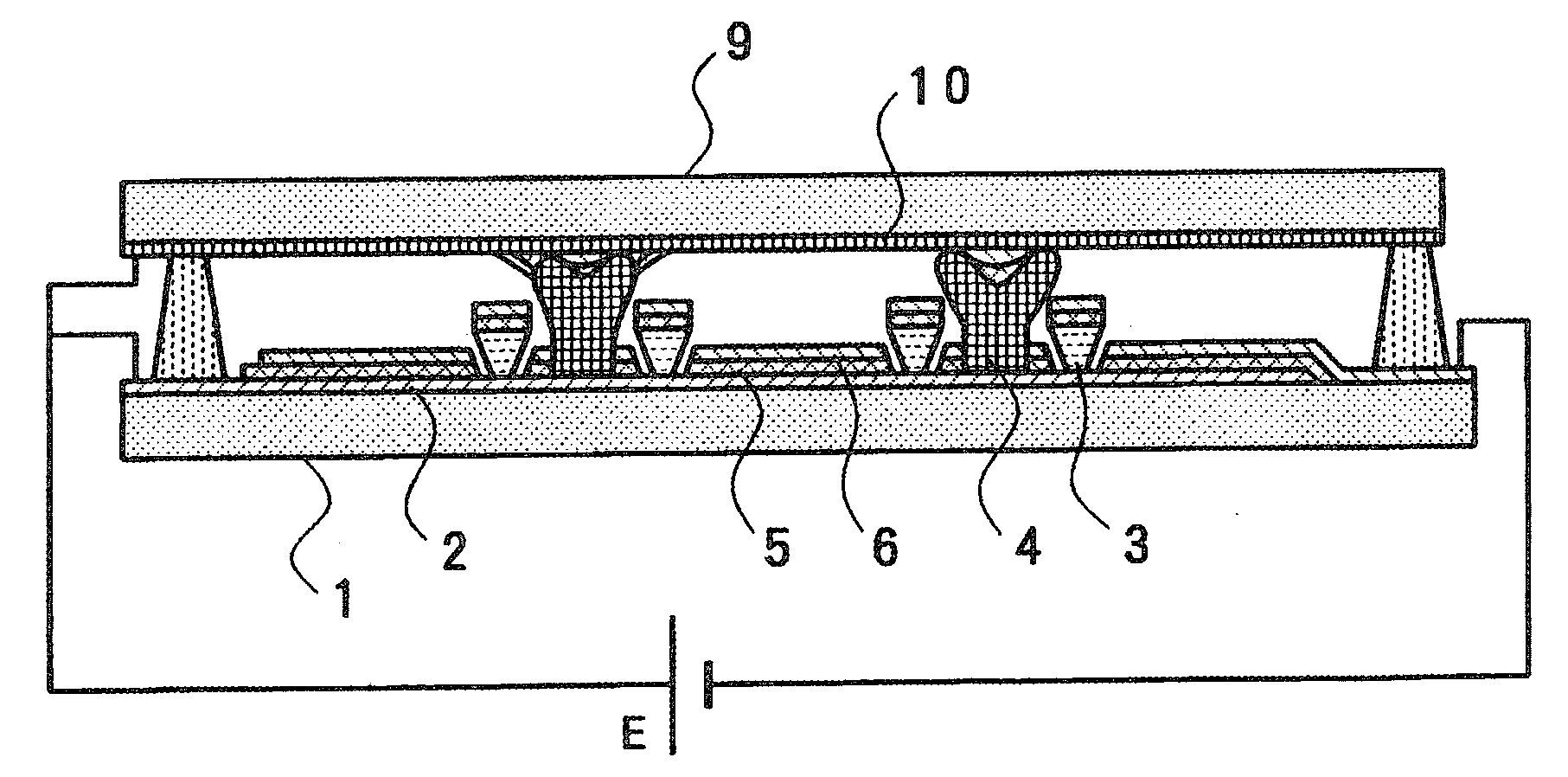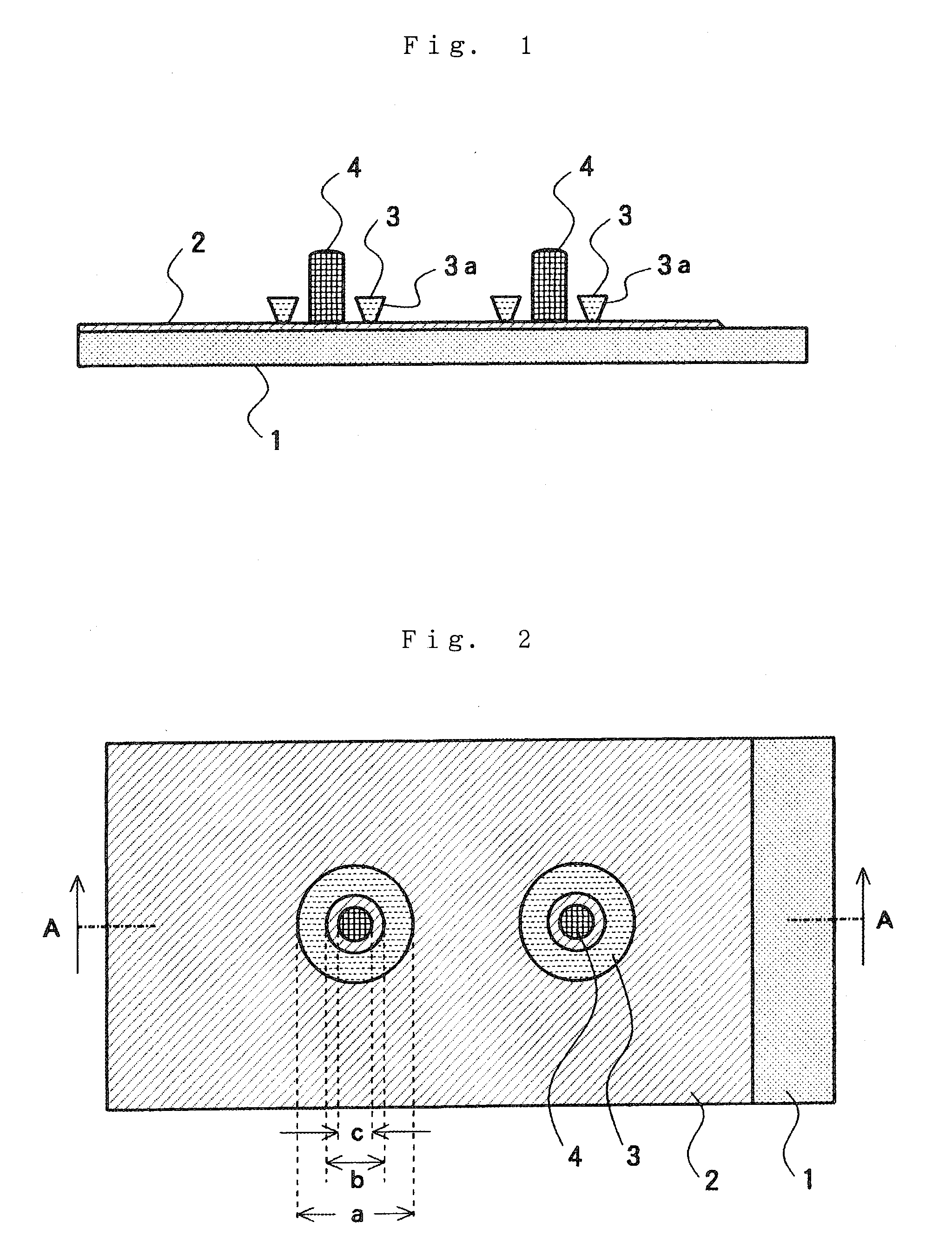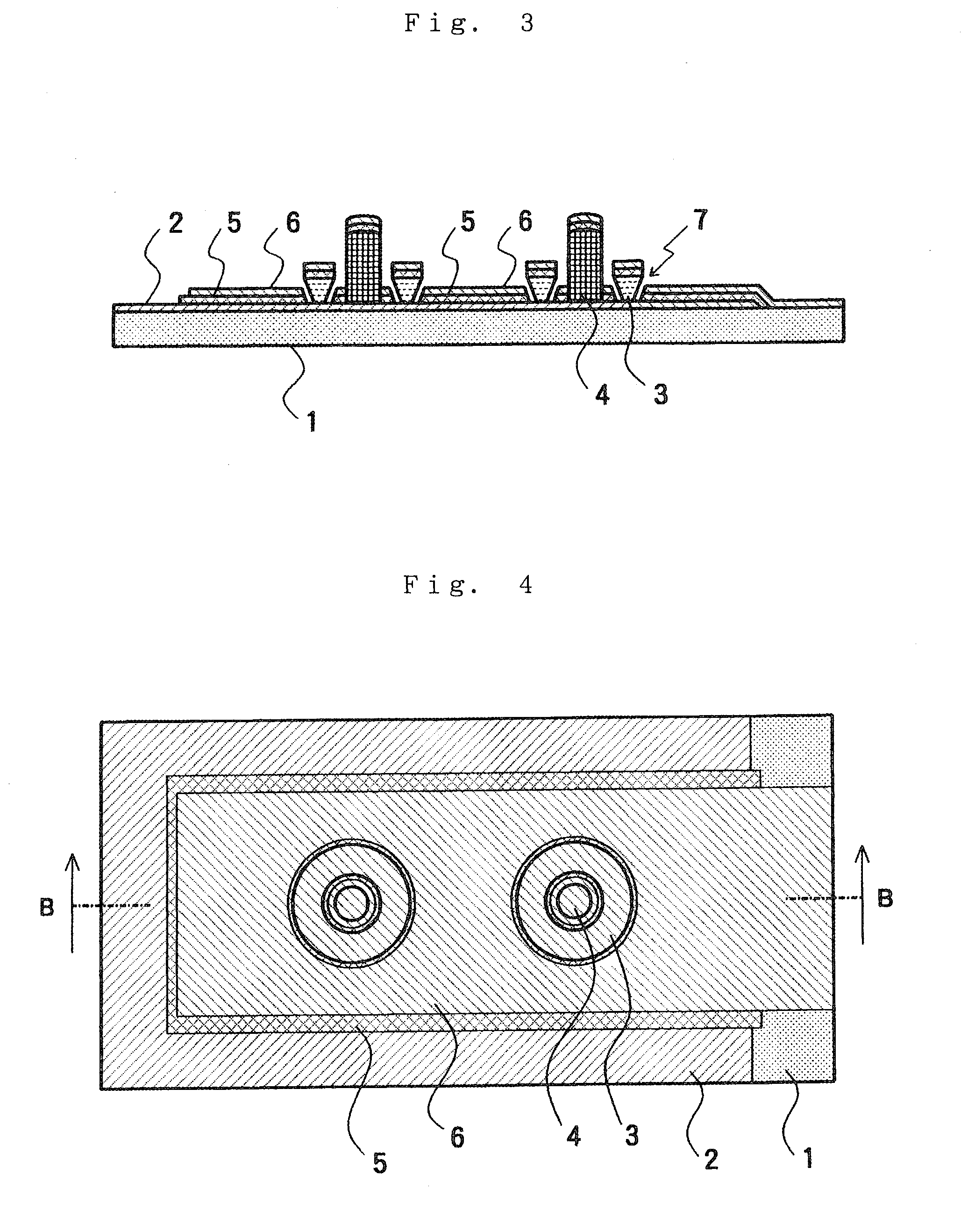Organic el light-emitting apparatus and method of manufacturing the same
a light-emitting apparatus and organic technology, applied in the manufacture of electrode systems, electric discharge tubes/lamps, discharge tubes luminescent screens, etc., can solve the problems of incomparable reduction of electric resistivity, non-uniformity (luminance gradient) of luminous brightness, and reduced brightness, so as to achieve high electric resistivity and reduce luminance gradient occurrence, the effect of uneven brightness
- Summary
- Abstract
- Description
- Claims
- Application Information
AI Technical Summary
Benefits of technology
Problems solved by technology
Method used
Image
Examples
first embodiment
[0041]An organic EL light-emitting apparatus according to the present invention will be explained with reference to the embodiment shown in the drawings. Firstly, FIGS. 1 to 8 show processes of manufacturing the organic EL light-emitting apparatus according to the
[0042]FIG. 1 is an enlarged sectional view of an essential part of the organic EL light-emitting apparatus at an initial stage of the manufacturing process, and FIG. 2 shows the same essential part viewed from the top. Specifically, FIG. 1 corresponds to the sectional view seen in the direction of an arrow from A-A line in FIG. 2.
[0043]As shown in FIGS. 1 and 2, the organic EL light-emitting apparatus is formed on a substrate 1 made of a transparent or semitransparent material such as a glass or the like or a light-transmitting resinous material. The substrate 1 has a thickness of about 0.1 to 10 mm, which thickness is selected considering the mechanical strength, weight, etc. In general, suitably the thickness of the subst...
second embodiment
[0069]FIG. 10 is an enlarged sectional view of an essential part of the organic EL light-emitting apparatus at an initial stage of the manufacturing process according to the present invention. FIG. 10 corresponds to FIG. 1 explained previously. In FIG. 10, the components having the same function as those shown in FIG. 1 are identified by the same reference numerals, and their detailed explanations are omitted.
[0070]In the configuration shown in FIG. 10, a gap holding member 11 having hardness higher than that of the conductive material formed at the peripheral portion of the columnar member 4 is accommodated at a core part of the columnar member 4 provided upright on the transparent electrode 2. In case where the columnar member 4 provided with the gap holding member 11 is used, the columnar member 4 functions as a reinforcing member for maintaining a space (gap) between the substrate 1 and the sealing member 9 with the sealing member 9 sealing as shown in FIG. 8.
third embodiment
[0071]FIG. 11 is an enlarged sectional view of an essential part of the organic EL light-emitting apparatus at an initial stage of the manufacturing process according to the present invention. FIG. 11 corresponds to FIG. 1 explained previously. In FIG. 11, the components having the same function as those shown in FIG. 1 are identified by the same reference numerals, and their detailed explanations are omitted.
[0072]In the configuration shown in FIG. 11, a gap holding member 11 is provided upright on the transparent electrode 2 separately from the columnar member 4 provided upright on the transparent electrode 2. When the sealing member 9 seals as shown in FIG. 8 in the configuration in which the gap holding member 11 is provided upright on the transparent electrode 2, the gap holding member 11 functions as a reinforcing member for maintaining a space (gap) between the sealing member 9 and the substrate 1.
PUM
 Login to View More
Login to View More Abstract
Description
Claims
Application Information
 Login to View More
Login to View More - R&D
- Intellectual Property
- Life Sciences
- Materials
- Tech Scout
- Unparalleled Data Quality
- Higher Quality Content
- 60% Fewer Hallucinations
Browse by: Latest US Patents, China's latest patents, Technical Efficacy Thesaurus, Application Domain, Technology Topic, Popular Technical Reports.
© 2025 PatSnap. All rights reserved.Legal|Privacy policy|Modern Slavery Act Transparency Statement|Sitemap|About US| Contact US: help@patsnap.com



